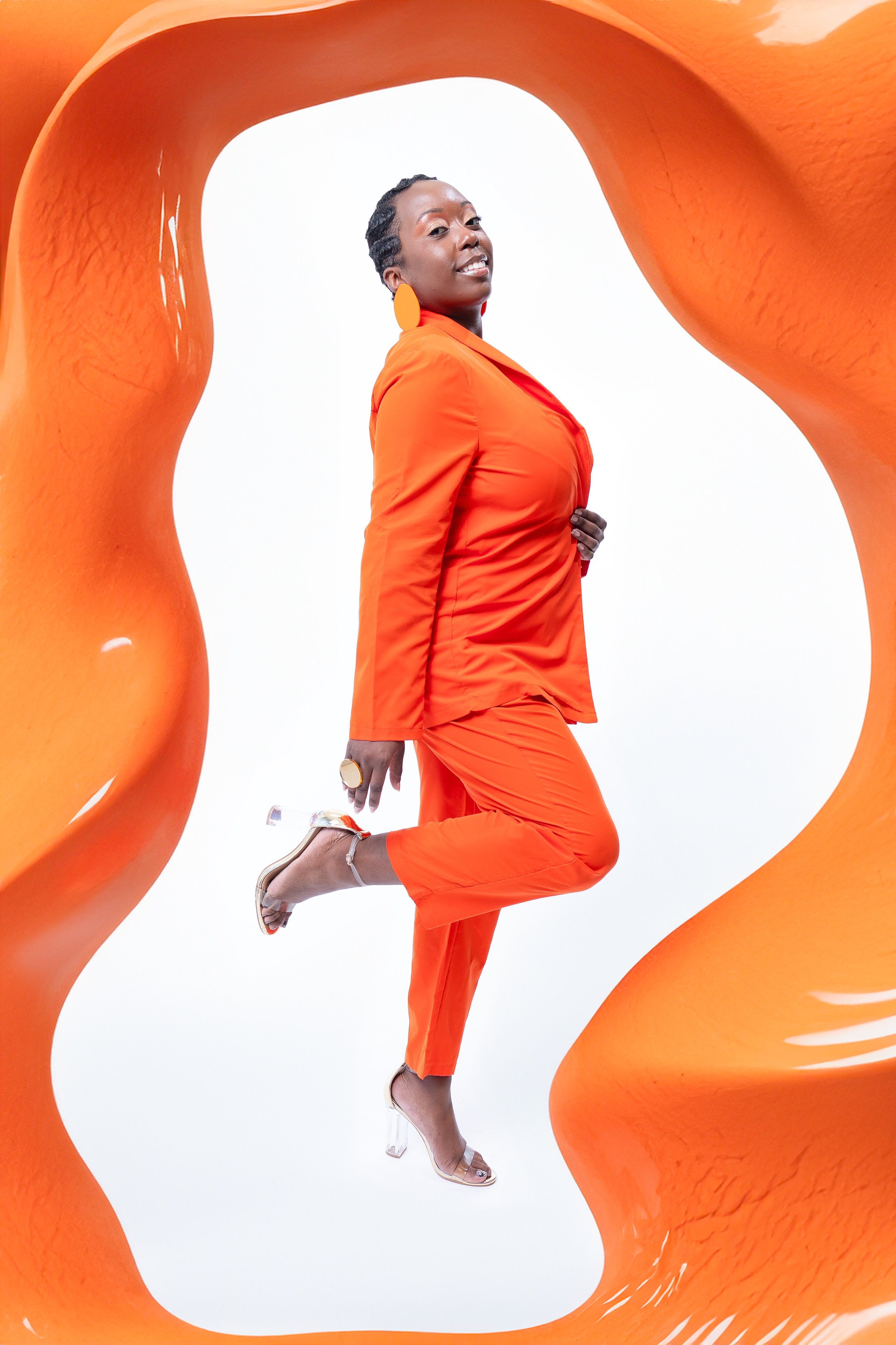CHASIDY MONTGOMERY'S INSPIRATIONAL JOURNEY DEFYING SICKLE CELL ANEMIA
Meet Chasidy Montgomery, a resilient 29-year-old Black queen hailing from Dallas, TX, proudly defying the challenges posed by Sickle Cell Anemia. As the eldest of three siblings, all born with some form of the condition, Chasidy's journey reflects the profound impact of this inherited blood disease on her life.
Sickle Cell Anemia, characterized by abnormal crescent-shaped red blood cells causing oxygen deficiency and potential blockages, brings forth a myriad of issues such as pain crises, swelling, and unexplained fatigue. Chasidy's personal struggle began at the tender age of four when life-threatening encounters with acute chest syndrome and pneumonia marked the onset of her battle.
Navigating not only the complexities of Sickle Cell Anemia but also contending with asthma, Chasidy weathered numerous health setbacks. Despite encountering pain crises and episodes of swelling, she remains grateful for the preservation of her pancreas, a rarity in the Sickle Cell community where removal is common.
Chasidy's resilience shines through her journey, surviving near-death experiences and defying the grim predictions of her youth. The landscape of Sickle Cell care has evolved since the '90s and early 2000s, offering more resources, advanced technology, and ongoing research that instills hope for the future.
Living with Sickle Cell is a deeply personal experience, as Chasidy attests, and she encourages open conversations not just about the varied complications with age but also the distinct challenges faced by males and females. Emphasizing the unique narratives within the Sickle Cell community, she advocates for a deeper understanding of each other's struggles.
One of the defining moments in Chasidy's life was a stroke at the age of seventeen, an event that left an indelible mark. Despite the harrowing experience, emergency blood transfusions, and short-term memory loss, she emerged stronger. Monthly apheresis treatments became a part of her routine, a commitment she acknowledges with gratitude despite occasional stresses.
Chasidy acknowledges that Sickle Cell may occasionally pause her life, affecting relationships and professional commitments. However, her philosophy is clear – once the storm subsides, the show must go on. Undeterred by setbacks, she remains resolute in pursuing her dreams of becoming a model, actress, or making a mark in healthcare. Chasidy Montgomery is a living testament to the fact that Sickle Cell does not define her; every day, she chooses to push herself, find joy, and turn her dreams into reality.
QSM: Can you share more about your journey with Sickle Cell Anemia and how it has shaped your perspective on life, especially considering the challenges you faced in childhood and the unexpected events like the stroke at the age of seventeen?
Chasidy: Having Sickle Cell didn't fully shape my perspective on life, that's something I didn't want for myself. I may have a disease and faced a few challenges, but it isn't the head of my life like God is. I know how far I can push myself and adding faith to that just reminds me every day that my life will be what I make of it. If I’m not perfecting my craft and going after what is important to me then I have sit back and reflect because sitting still is not an option.
QSM: Given your experience with Sickle Cell Anemia and the unique challenges it presents, how do you navigate and balance your personal and professional life, especially when dealing with moments where the illness takes over?
Chasidy: Finding balance between my personal life and my professional life can be a struggle within itself because I never want to stretch myself out too thin.
QSM: You mentioned having a stroke at the young age of seventeen and undergoing apheresis treatment monthly. How has this ongoing treatment impacted your daily life, and what coping mechanisms do you find helpful during the stressful moments associated with the treatment?
Chasidy: Apheresis has helped me in many ways, and I think of it as a full body restart. It restores my energy, I hardly have pain crisis compared to my past, and it prevents my sickle cells from regenerating as fast. I will have to do this treatment for a very long time and the downfall of it is I have iron overload due to getting the treatment done as often as I do. It can become stressful at times because I don't go as often as I have to and would rather not be bothered. What helps me overcome those moments is when I remember the treatment is helping me live longer, how far I have gotten in life, and that I have to continue to be strong for myself and my family.
QSM: In your story, you express a desire to be a model, upcoming actress, and work in healthcare. How has your personal journey influenced these career aspirations, and what message or impact do you hope to bring to others in similar situations through your pursuits?
Chasidy: As a child I always found myself taking care of my family just as they took care of me. I was also in the hospital a lot, so I became familiar with a lot of things and actually tried to do them on my own. As I got older, I realized I was a natural due to my own health because it became second nature to me. I felt as if I'd be the perfect candidate since I can relate and I look at myself as a healer.
QSM: You emphasize the importance of understanding and empathy from those around you during challenging moments with Sickle Cell. How do you educate and communicate with your friends, family, and business associates about your condition to foster a supportive environment?
Chasidy: I'm not afraid to make people around me aware of my disease. I think it makes life easier when someone knows upfront what to look out for or what could possibly be going on if something is wrong with me. It is nonnegotiable and when someone shows me it is not important or they don't care to understand, I take that as they can't be trusted. Most of my friends have been around me since I was in high school, and if not some have seen me during some tough times and I didn't have to explain anything.
QSM: Looking forward, you express optimism about advancements in resources, technology, and research related to Sickle Cell Anemia. Can you share your thoughts on the changes you've witnessed over time and the role you hope to play in raising awareness and contributing to the ongoing progress in addressing Sickle Cell Anemia?
Chasidy: Once upon a time there was no cure at all for Sickle Cell Anemia. Now we have the option of stem cell transplant or gene therapy. Now depending on the hospital, we have been provided group therapy and similar activities to not only bring us close together, but to help each other understand our struggles and that needs to be talked about more in our community. I'm not fully aware of what my future looks like, but I do plan to get more involved and bring awareness in any way possible.
QSM: Where can people follow and support your journey?
Chasidy: Instagram: Sidylove_
Photo credits:
Model: Chasidy Montgomery
Photographer: @lionelwhytephotography
Pose Coach: @blu3modelcoachingllc




